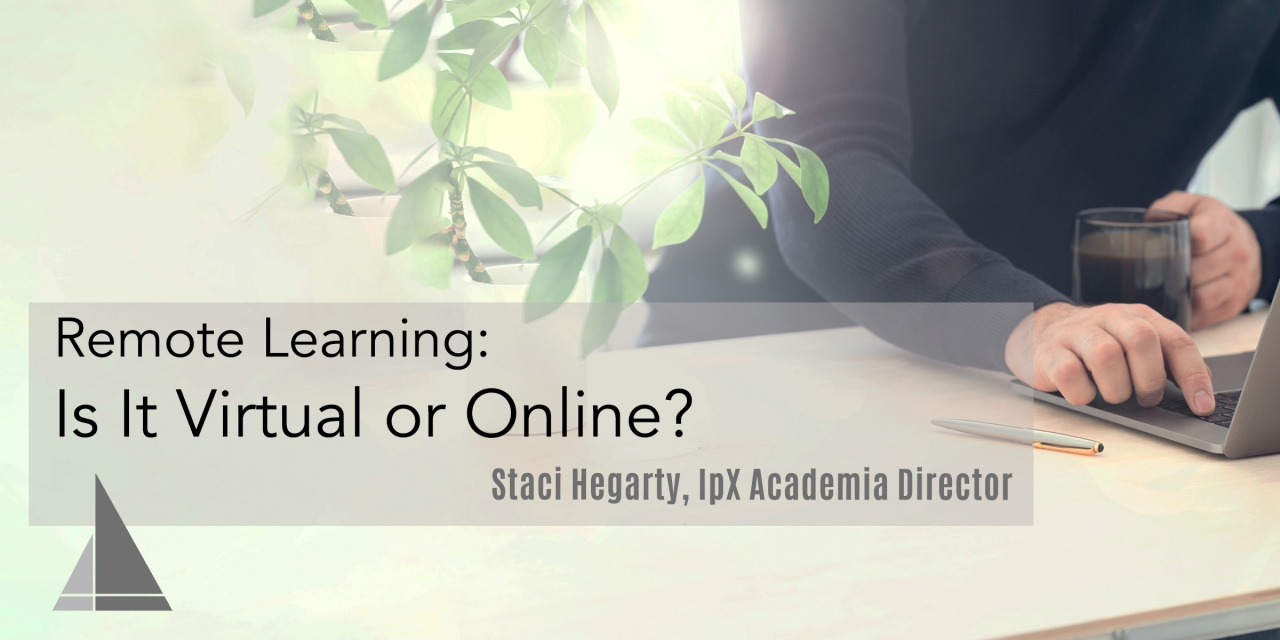Now that many training organizations have pivoted to online and away from in-person courses, it’s important to understand what to expect from the different options. One organization’s definition of a ‘virtual’ course might be different than another. Before making a decision to spend training dollars, take a few minutes to review the various kinds of distance learning courses that are available.
Online classes: True online courses tend to be the most rigorous. They are usually designed to be entirely asynchronous, with a variety of reading, workshops, discussion boards, assignments and possibly quizzes and/or exams. Students must be able to budget their time without the benefit of a scheduled, required time to attend. Instructors are available for assistance and guidance, typically via email and/or discussion boards. Response time is not usually immediate and may take 24-48 hours for an instructor to respond to an inquiry. Online classes are open for a set length of time and students must complete all required coursework by the last day of the course. The asynchronous nature of this kind of course allows students to work around their professional and personal obligations if necessary.
Virtual, Instructor-led classes: These courses may have some prepared videos or other educational materials that are presented to students in a synchronous manner using a webinar-type platform. While students are attending the course remotely, all students are present at the same time. An instructor is always present (remotely) and will lead the class in discussions, answer questions and give examples to highlight the concepts being covered during the course. Depending on the length of the virtual course, students may need to have adjustments made to their workload in order to accommodate the prescribed schedule for the course. Because these kinds of courses are synchronous, students are expected to be present for the entire scheduled class time with minimal interruptions. Depending on the course, there may be short assignments for students to complete outside of scheduled class time in order to engage more fully with the material being presented.
Live-streaming classes: These courses feature an instructor teaching as if he/she/they are teaching an in-person course. Students log into the course, typically using a webinar platform, at an assigned time and watch the live lecture. There is greater immediate interaction with the instructor than the previous two kinds of classes, whether via typed inquiries in a “Questions” box in the webinar or verbal interaction through the audio/video function. Most instructors in this scenario prefer the typed questions to prevent participants interrupting or talking over one another. Depending on the number of participants, it may not be possible for the instructor to open the class to lengthy verbal discussions of a particular topic. This kind of class is the most similar to the in-person learning experience but has the highest risk for technical difficulties. Just as with the virtual, instructor-led classes, there may be assignments for students to complete outside of scheduled class time. Again, the synchronous scheduling requires that students be present during the class with minimal interruptions.
IpX has offered
online classes for years. We use a combination of videos, readings, discussion boards and workshops to facilitate deep engagement with the content on your schedule. Our entire CM2-Comprehensive certification program is available online, with classes starting every Monday. In an effort to offer students more options for remote learning, we also offer some of our most popular courses as
virtual classes. Our expert instructors facilitate the classes, encouraging students to interact in real-time. For employers looking to offer training through focused workshops such as Universal Document Control or Item Interchangeability and Re-Identification, live streaming workshop courses can be scheduled upon request.
All three of these remote learning options require access to a computer with speakers and a stable WiFi connection. Virtual and live-streaming courses may also require a webcam and microphone for students to participate in discussions. Regardless of the kind of remote learning you decide to engage, the ROI for training your workforce is always greater than the cost of the courses.
